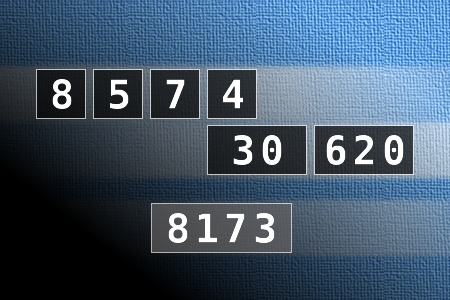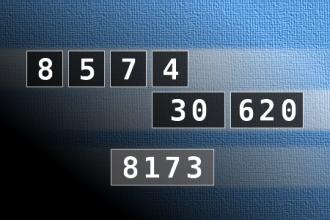Calculate the number 8173
NUMBERMANIA: Calculate the number 8173 using numbers [8, 5, 7, 4, 30, 620] and basic arithmetic operations (+, -, *, /). Each of the numbers can be used only once.Correct answers: 11
The first user who solved this task is Nasrin 24 T.
#brainteasers #math #numbermania


